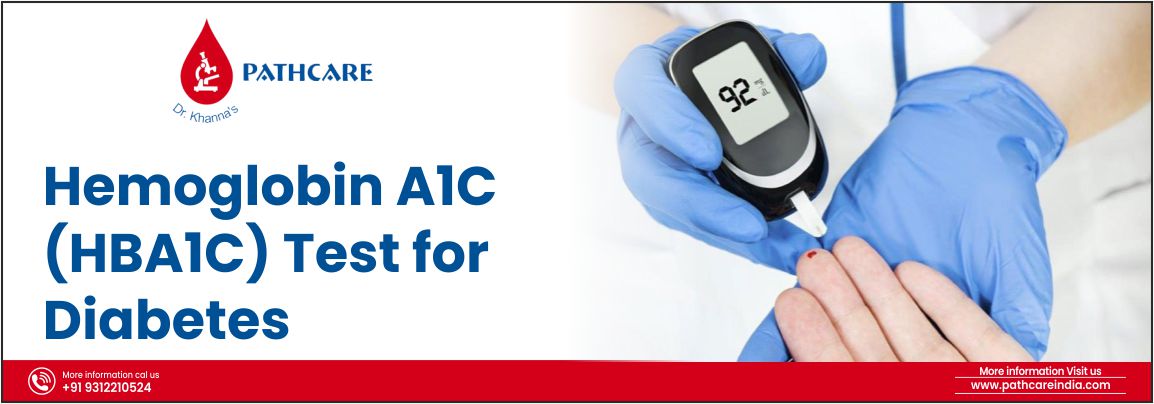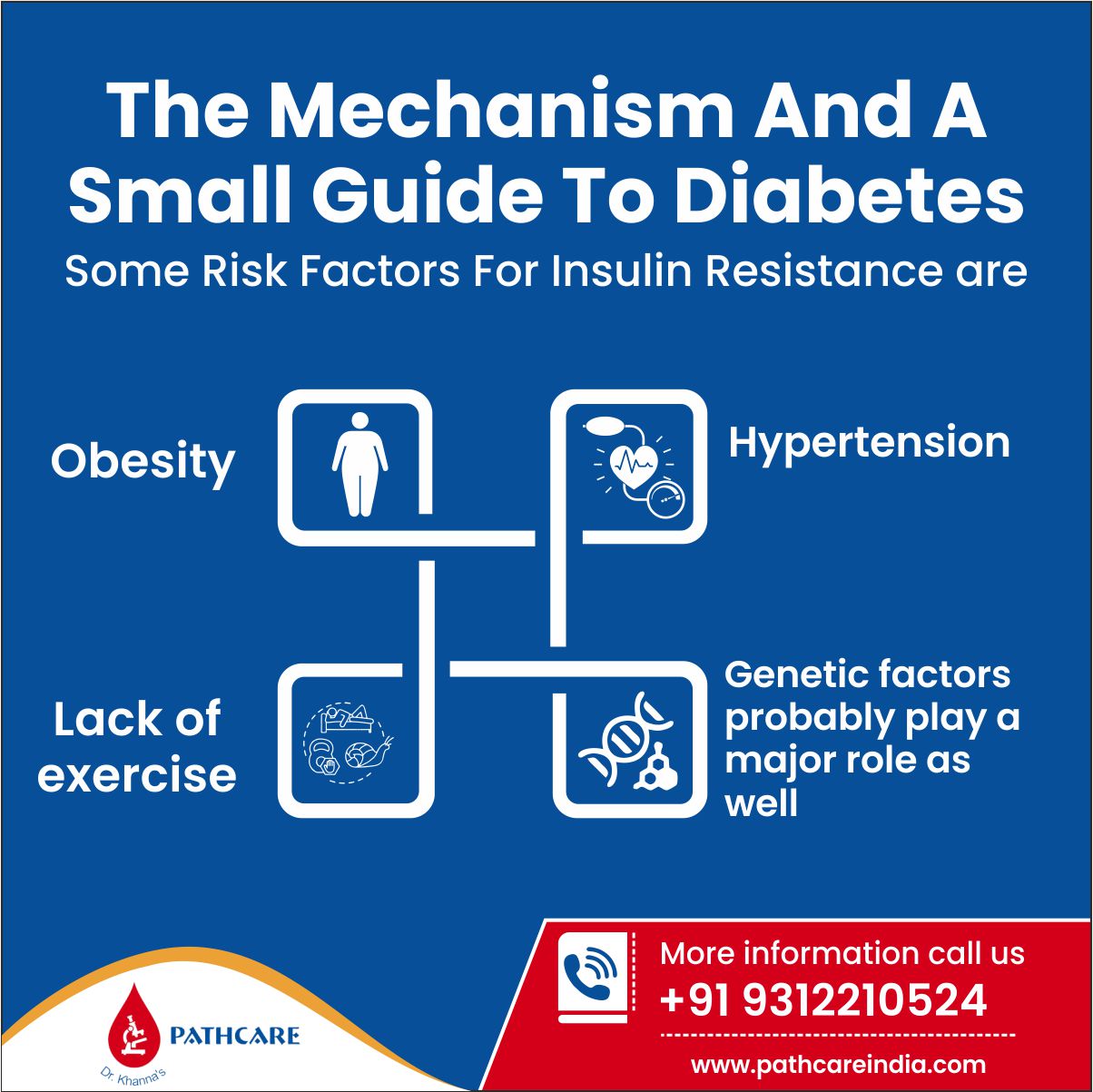No products in the cart.

Simply put, the Hemoglobin A1c test is the test for diabetes. Known by many names, the HbA1c test is done to determine the glucose levels in the blood. Besides that, the test helps determine the type of diabetes an individual has.
Before hopping into the test details, let’s briefly know about diabetes.
This blog will make it easy for you to better understand diabetes, its mechanism, and mainly the test – Hemoglobin A1c. You will get the answer to when and why you need this test for diabetes.
The mechanism and a small guide to diabetes
In diabetes mellitus, your body has trouble moving glucose (a type of sugar) from your body to your cells.
- This leads to a high glucose level in your blood and not enough glucose in your cells. Remember that our body needs glucose as a source of energy. So not letting the glucose enter the cells leads to the cells starving for energy.
- Even with a surplus amount of glucose right on the doorstep (in the blood), the cells don’t get enough of It.
- In general, our body controls how much glucose(sugar) is in the blood relative to how much glucose is in the cells. This occurs through two hormones – insulin and glucagon.
- Insulin is used to reduce blood glucose levels, and glucagon is used to increase blood glucose levels.
- The cluster of cells called Islet of Langerhans produces these hormones in the pancreas. Insulin is secreted by the betta cells in the centre of these islets, and glucagon is secreted by the alpha cells in the periphery of the islets.
- Insulin reduces the amount of glucose in the blood by binding to the insulin receptors present embedded in the cell membrane of various insulin-responsive tissues.
- Examples of insulin-responsive tissues are – muscle cells or adipose tissues.
- This in turn, gives rise to a mechanism where the insulin is transmitted into the cells.
- Whereas glucagon does the exact opposite. Glucagon raises blood glucose levels by getting the liver to generate new molecules of glucose from other molecules.
- It is also responsible for the blood glucose levels by getting the liver to generate new glucose molecules from another molecule so that it all can get dumped into the blood.
Diabetes mellitus gets diagnosed when the blood glucose levels get too high. Mainly seen in 10% of the world’s population, diabetes is of two types: type-1 and type-2.
The main difference between them is the underlying mechanism leading to a rise in blood glucose levels.
Among the whole population of diabetes, at least 10% of people suffer from diabetes1, and the remaining 90% suffer from diabetes 2.
- In the case of type- 1 diabetes, the body doesn’t make enough insulin.
- Whereas in the case of type-2 diabetes, the body makes enough insulin, but the tissue doesn’t respond. The reason behind the cells not responding is not fully understood.
The body provides enough insulin, but the glucose transporters in the cells do not move towards the membrane effectively, resulting in the lack of insulin and energy produced by the cells for day-to-day work. These cells, therefore, have insulin resistance.
Some risk factors for insulin resistance are –
- Obesity
- Lack of exercise
- Hypertension
- Genetic factors probably play a major role as well
As the tissues do not respond to normal insulin levels, the body produces more insulin to get the same effect and move glucose out of the blood. This is done through betta cells hyperplasia (an increase in the number of Betta cells)
Over time, these maxed-out betta cells get exhausted, resulting in hypertrophy or hyperplasia of betta cells. Therefore, leading to a decrease in the insulin level and an increase in blood sugar levels. This results in hyperglycemia.
Now that we got a brief idea about the mechanism of diabetes let’s know how it is diagnosed and the details about the HbA1c test for the same –
Being the test that determines the blood glucose level helps to check if your diabetes is being controlled or not.
Along with the fasting plasma glucose test, the HbA1c test is one of the primary manners by which type 2 diabetes is analysed.
The HbA1c test, otherwise called the haemoglobin A1c or glycated haemoglobin test, is a significant blood test showing how well your diabetes is being controlled.
This blood sugar test helps in determining the risk of diabetes. This glucose monitoring test helps in being informed about your risk of diabetes and how to control your glucose levels.
For checking Hemoglobin A1c levels, The World Health Organization (WHO) proposes the accompanying analytic rules for diabetes:
- HbA1c under 42 mmol/mol (6.0%): non-diabetic
- HbA1c somewhere in the range of 42 and 47 mmol/mol (6.0-6.4%): Impaired glucose guideline (IGR) or Prediabetes
- HbA1c of 48 mmol/mol (6.5%) or over: Type 2 diabetes
Significance of haemoglobin A1c test for diabetes-
Being an important indicator of glycemic control, the Hemoglobin A1c test provides data about the risk of long-term chronic diabetes. This test lets the patient keep his lifestyle, diet and mental wellness in check to keep diabetes in check.
As elevated Hba1c results in the risk factor of stroke and coronary heart disease, the information provided by the haemoglobin A1c test is found to be valuable.
How to do a HaemoglobinA1c test –
To measure a person’s HbA1c level, you should first draw blood from a patient’s arm.
At times to test HbA1c level in youngsters, a solitary drop of blood is taken from the patient, which shows the amount of sugar in the blood.
- The haemoglobin A1c test would tell you about your average blood sugar over the past 2-3 months.
- The blood sample is taken from a person who has or could be having diabetes and is tested with a Hemoglobin A1c analyser.
- As the half-life or the life span of the RBC is 3 months, the test will show the level of glucose in the blood in the past three months.
- Persons with diabetes should have a haemoglobin A1c test every 3 months to ensure their blood sugar levels are under control or in the target range.
- For instance, if we intake a meal full of glucose(sugar), there’s an increase in blood sugar levels. In the case of a normal person, the pancreas releases insulin in response to blood sugar levels. In the case of a diabetic individual, glucose mobilisation is arrested in the cells in the absence of insulin.
Haemoglobin A1c results –The results of the HbA1c test should be with you rapidly. Your test results indicate to your doctor whether to change your therapy or medications. They, therefore, help in assisting you with taking the required precautions for you to keep your blood sugar levels in check.
There are lots of reasons for which the HbA1c levels can change –
- If you are not feeling well
- If you’re taking different medications, similar to steroids.
- If there is any change in the way of life
Being not as easy to regulate haemoglobin A1c levels as the phenomenon sounds, yet it should be your responsibility to keep your HbA1c levels within the required range. With heaps of data about diabetes and more about health, we would love to enlighten you through our blogs. Stay connected for more, and don’t forget to drop your valuable feedback on our website.
Also Read : Diabetes test in Delhi





